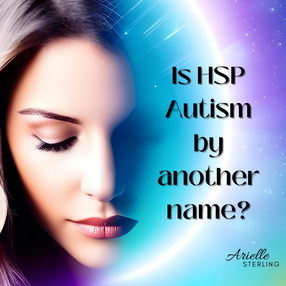 Understanding the complex interplay between Sensory Processing Sensitivity (SPS), Sensory Processing Disorder (SPD), and Autism has been a significant point of discussion on Tiktok lately. While these concepts share some similarities, they also have distinct characteristics that warrant careful examination. By unraveling these connections, we aim to shed light on the experiences of individuals with heightened sensory processing and contribute to a better understanding their unique needs and support requirements. Dr. Elaine Aron's concept of Sensory Processing Sensitivity (SPS) and Sensory Processing Disorder (SPD) share some similarities but also have distinct characteristics. Dr. Aron defined sensory processing sensitivity as a personality trait characterized by heightened sensitivity to sensory stimuli, deep emotional responsiveness, and a tendency to process information deeply. It is a trait that exists on a continuum, with some individuals being highly sensitive and others less so. SPS is not considered a disorder or a pathology but rather a natural variation in sensory and emotional processing. On the other hand, sensory processing disorder (SPD) is a neurodevelopmental condition in which individuals have difficulties processing and responding to sensory information from the environment. SPD is recognized in the Diagnostic and Statistical Manual of Mental Disorders (DSM-5) as a condition that can significantly impact daily functioning. While there are similarities between SPS and SPD, they are not identical. Some highly sensitive individuals may also experience sensory processing challenges, but not all highly sensitive individuals have SPD. Similarly, not all individuals with SPD would necessarily identify as highly sensitive. There can be overlapping features and experiences between SPS, SPD, and Autism. Many individuals with Autism display sensory processing difficulties and can be highly sensitive to sensory stimuli. Sensory sensitivities and challenges with sensory integration are common characteristics of Autism. It is important to note that while some individuals with Autism may exhibit heightened sensitivity or sensory processing challenges, not all individuals on the autism spectrum necessarily have SPS. Autism is a complex developmental disorder with various symptoms and variations, including social communication difficulties, repetitive behaviors, and specific patterns of sensory sensitivities. Sensory processing challenges in Autism can manifest in different ways, such as hypersensitivity (being overly sensitive to certain stimuli) or hyposensitivity (being less responsive to certain stimuli). While there may be shared experiences and overlaps in sensory processing between SPS, SPD, and Autism, it is crucial to recognize that they are distinct entities. Sensory processing challenges in Autism are considered a core feature of the condition. In contrast, SPS is a broader personality trait related to sensitivity and deep processing of sensory and emotional information. It's also worth noting that not all individuals with Autism or sensory processing challenges are highly sensitive in the context of SPS. Sensory experiences and sensitivities can vary significantly among individuals on the autism spectrum. While some may align with the characteristics of SPS, others may not exhibit the same degree of sensitivity or deep processing of sensory information. The relationship between SPS, sensory processing challenges, and Autism is an ongoing research and exploration area. Some researchers have suggested that there may be a subgroup of individuals on the autism spectrum who also possess SPS traits. These individuals may experience heightened emotional responsiveness, sensory sensitivities, and a tendency to process information deeply. However, further studies are needed to understand this overlap's extent and nature fully. It's essential to approach these concepts nuancedly, recognizing that each individual's experiences and needs are unique. Sensory processing challenges and sensitivities can significantly impact the daily lives of individuals with Autism, and appropriate support and interventions tailored to their specific needs are essential. In summary, while there are connections between sensory processing sensitivity (SPS), sensory processing disorder (SPD), and characteristics commonly observed in individuals on the autism spectrum, they represent distinct concepts. SPS is a personality trait related to heightened sensitivity and deep sensory and emotional information processing, while SPD and sensory challenges in Autism are specific neurodevelopmental conditions. Further research is necessary to explore the intersection and shared features of these concepts and to inform appropriate support and interventions for individuals with sensory processing difficulties.
0 Comments
Leave a Reply. |
Arielle SterlingArielle is a best-selling author, holistic life coach and intuitive energy healer. Archives
July 2024
Categories
All
|


 RSS Feed
RSS Feed